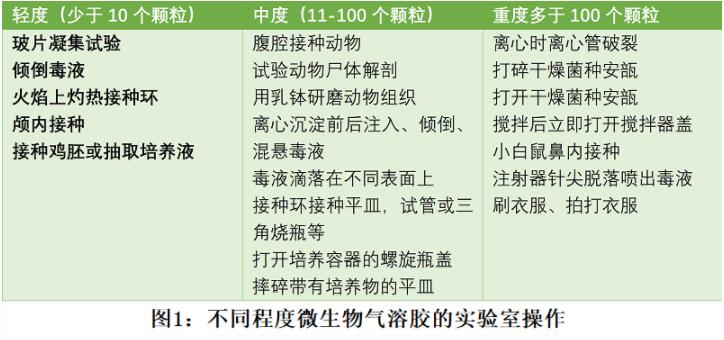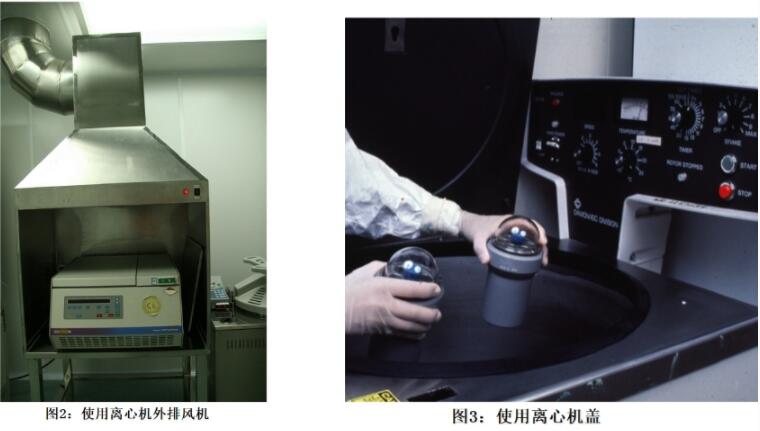Laboratory centrifuge use precautions and cause analysis

A centrifuge is an instrument often used in biological experiments. It uses a high-speed rotation of a rotating shaft to generate centrifugal force to separate substances of different densities. It can achieve the purpose of initial separation and purification and is an indispensable instrument in the laboratory. The centrifuge produces aerosols during high-speed operation (Fig. 1). The aerosol contains pathogenic microorganisms, which are harmful to the environment, the human respiratory system, the digestive system, and the nervous system. Laboratory accidents caused by improper use of the centrifuge in the laboratory also occur from time to time, so how to use the centrifuge correctly is very important.

1 The main cause of the accident
1 When the centrifuge is leveled, the balance of the centrifuge tube is more than 0.1~1g due to the long-term use of the balance. The weighing error of the sample, the overflow of the sample liquid during centrifugation, and the corrosion of the rotor are the main factors causing the rotor imbalance.
2 When the centrifuge tube is loaded, the centrifugal tube cap is not tightened. During the centrifugation process, the high vacuum state in the centrifugal chamber causes the centrifuge tube to rupture and the sample liquid to overflow. This causes the rotor to be unbalanced and the shaft is bent or broken.
3 When the horizontal rotor is used, the gondola does not match the horizontal rotor model, which affects the dynamic balance of the rotor.
4The rubber seal ring and the rotor cap rubber seal ring in the centrifuge cap are improperly used and improperly disinfected, such as high temperature disinfection (bake in a dry box) or internal cracking due to long-term use, aging cracking, loss of sealing effect, etc. Overflow at high speeds, allowing the rotor to operate in an unbalanced state.
5 For the centrifuge tubes of various materials, the scope and disinfection method of the centrifuge tube required by the manufacturer are not well understood before use, and the chemical solvent and the inappropriate disinfectant solution are used to cause the centrifuge tube to swell and rupture during operation. ACCIDENT.
6 Centrifuge tube aging or use high-speed centrifuge tube on the ultra-speed centrifuge, the tube will rupture during operation, the sample liquid overflow will cause imbalance, and the centrifugal shaft will cause damage.
The following operations must be observed when using the centrifuge
1 Centrifuge installation: Select the appropriate location according to the performance of the centrifuge. For general small high-speed desktop centrifuges and low-speed centrifuges, they can be placed on a stable workbench and placed horizontally on the front side. Leave at least 30 cm of space around the centrifuge.
2 Before use, check whether the indicators of the centrifuge are in a normal state, such as internal components, control panel display, power supply, etc.
3 When using, place the centrifugal articles in a symmetrical and equal quality. If you want to perform unequal quality balancing, level the water with a centrifuge tube. The surface of the centrifuge tube should be free of foreign matter such as liquid and powder as much as possible to avoid corroding the inside of the centrifuge and causing danger.
4 In order to improve safety, for a normal temperature centrifuge, it is best to turn off the power before placing the item. After placing the sample, cover the top of the centrifuge and centrifuge. After the centrifugation is completed, it is best to turn off the power supply. After the rotor is stopped, turn on the top cover of the centrifuge and remove all the items in order, and then perform other operations. Avoid taking other things while taking the items to avoid danger.
5 When the volatile or corrosive liquid is centrifuged, the centrifuge tube with the cover should be used to ensure that the liquid does not leak to avoid corrosion of the inner cavity, thus causing an accident.
6 Centrifuge is strictly prohibited to rotate without rotor.
7 If it is necessary to centrifuge at a temperature below room temperature, the rotor should be pre-cooled in the centrifuge before use or pre-cooled in the refrigerator.
8 When the manual speed control is started, the speed switch or timing knob is placed in the low gear, and then gradually adjusted to the desired value after starting. After a job, turn the knob to the low gear and work again. It is forbidden to start directly in the high gear or high timing value. The speed and time adjustment settings should be within the normal operating range of the centrifuge to avoid damage to the machine or danger.
9 rotor maintenance: the rotor should be strictly checked for foreign matter in the hole before each use to maintain the balance during centrifugation. The rotor must be kept dry and clean to avoid collisions and abrasions.
10 If the infectious sample is centrifuged, the centrifuge should preferably be placed in a biosafety cabinet or a centrifuge fan (Fig. 2). A centrifuge tube with a screw cap (Fig. 3) should be used and wait 20 min after the end of the centrifugation. After opening the centrifuge lid, wait for 20 minutes to open the rotor cover and take out the sample.

When the centrifuge is running, the tube is broken or suspected to be broken. Immediately turn off the power and keep the lid of the centrifuge closed for 30 minutes. When cleaning, put a pair of thick rubber gloves on the outside of the disposable gloves, using tweezers or cotton tweezers. Take the debris, all broken test tubes, crushing buckets and casings should be placed in the sharps box and disposed of in accordance with waste disposal regulations. The unbroken covered pipe is disinfected with a chlorine-containing disinfectant on the surface of the contaminated container; the inner surface of the centrifuge can be wiped with a chlorine-containing disinfectant or 75% alcohol with an effective chlorine concentration of 0.5%, and then wiped with water. Use after drying.
The usage record should be made after each operation, and the performance of the centrifuge should be checked regularly.
During the centrifugation process, the parameters on the centrifuge instrument should be observed in real time. It should not be left at will. If it encounters an abnormality, it should be stopped immediately and the fault should be eliminated in time.
Recommend the ESCO VersatiTM Series Centrifuge
The Esco Versati range of centrifuges is equipped with maintenance-free motors, robust mechanisms and a smart Ecourage microcomputer processor control system for maximum reliability and safety. Covered with microcentrifuges and low-speed universal centrifuges, it has many types of rotors, adapters and accessories. The Versati range is highly versatile to meet all your application needs and is suitable for a wide range of general purpose tube, tube and microplates.
Ultrasonic Scalpel Accessories
Ultrasonic Scalpel Accessories,Ultrasonic Knife Head,Ultrasonic Scissor Blade,Titanium Ultrasonic Probe
Changzhou Ziying Metal Products Co., Ltd , https://www.ziyingmetal.com